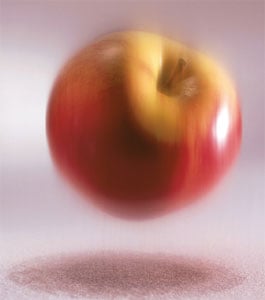The history of science is full of mythical stories that we repeat, even when we suspect that they are probably wrong. Robert P Crease recounts several and asks for yours
Richard Feynman starts his book QED: The Strange Theory of Light and Matter with a remarkable confession. He tells a brief story about the origins of his subject – quantum electrodynamics – and then says that the “physicist’s history of physics” that he has just related is probably wrong. “What I am telling you”, Feynman says, “is a sort of conventionalized myth-story that the physicists tell to their students and those students tell to their students, and is not necessarily related to the actual historical development, which I do not really know!”
Like Feynman, many teachers and textbooks are unashamed to retell “damn good stories”: colourful versions of people and events that are oversimplified and often inaccurate. All of the scholarly fields are afflicted. Ivan Morris, a British-born scholar who taught Japanese studies at Harvard University, once expressed an intention to write a book about myths embraced by his academic colleagues, tentatively entitled The Bull Must Die. Unfortunately, Morris died before he could finish the work and the bull continues to flow unchecked.
True legends
There are some scientific legends that contain grains of truth. One is the famous story that Galileo dropped balls from the Leaning Tower of Pisa to refute Aristotelian mechanics. The legend is so theatrical that many people assume it to be apocryphal. Galileo scholar Stillman Drake, carefully examining Galileo’s correspondence, concludes that Galileo probably did perform an experiment on falling bodies at the Leaning Tower. But what is untrue is that this could have been decisive in overturning Aristotelian mechanics. Galileo was merely demonstrating, albeit dramatically, a conclusion that he had already reached based on many forms of thought and evidence.
It is a similar case with the story, long hated by historians of science, of an apple that fell in his mother’s orchard teaching Newton the law of universal gravitation. Historians now know that the story (whether true or false) of the falling apple prompting him to ponder gravitation comes from Newton himself. However, what is surely false is the implied causal force of the event – that seeing an apple fall created the law of universal gravitation in Newton’s mind, without much further analysis and reflection. As his biographer Richard Westfall observes, “The story vulgarizes universal gravitation by treating it as [nothing more than] a bright idea.”
These two stories, I think, owe their currency partly to historical condensation – the tendency of popular and even historical literature to pluck out a single episode to summarize and stand for a complex series of important events. Thus the Leaning Tower episode becomes shorthand for the move from Aristotelian to modern mechanics, while the apple incident, recollecting as it does the tree of knowledge in the Garden of Eden, condenses the process by which new fundamental ideas are born. They are also popular because they are theatrical.
False legends
In contrast, many other common legends are entirely unfounded. Sometimes they persist because they conveniently reinforce established dogma, such as the story that the Catholic Church condemned the use of zero and Arabic numerals. Naturalists are also said to have convincingly proved evolution in action by showing in the 1950s that the increased abundance of industrial soot in the environment led to more melanic (darker, mutant) peppered moths. This experiment is now known to be badly flawed.
Other false stories are popular simply because they are fun. An example is the one about physicist Donald Glaser coming up with the idea of the bubble chamber one night at a bar after popping open a beer. A few years ago, after hearing this story one too many times, I called Glaser to ask if it were true. He assured me that it was false – he came up with the idea behind the bubble chamber via the application of cold, hard reason. However, Glaser admitted that, for sheer amusement, he once tried to see charged particle tracks in soda bottles.
Other stories are harder to explain. Does the Coriolis effect really make bath water swirl down the drain in opposite directions in different hemispheres? The effect is so weak in sinks and bathtubs that it is swamped by other factors, such as where the tap is located, the angle at which water hits the basin, water currents and so forth. Yet this story is confidently repeated by many scientists and science writers including Isaac Asimov – though Frank Close, in Lucifer’s Legacy, tells an amusing story about unsuccessfully trying to confirm it on a plane from England to South Africa. This damn good story, I suspect, exists because we would like the world to behave as our models say it does.
The critical point
Although damn good stories are found in every field, why are they so abundant in science? After all, scientists like to pride themselves on their strict adherence to fact and evidence. What prompted Feynman, who was otherwise so insistent on getting things right, to be so breezily unconcerned with telling students an untrue “physicist’s history of physics” about a subject that he professed to love? Could it be that he and other physicists think these stories innocent? Do they fear that the truth will adversely affect what students do; or do they think that damn good stories are beneficial because they boost students’ enthusiasm?
I have recounted a few of my favourite legends – what are yours? I shall devote a future column to the responses.
• Good stories – does it matter whether they are true or false? If not, why do we keep retelling them? E-mail your contributions to Robert P Crease to the address below or fax them to +1 631 632 7522




